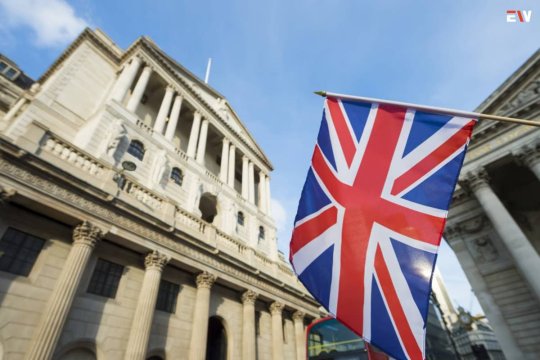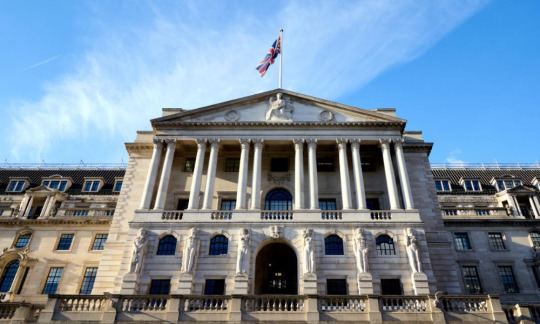#bankofengland
Photo

Virtuous Bankers: A Day in the Life of the Eighteenth-Century Bank of England
Nicknamed "The Old Lady of Threadneedle Street," the Bank of England is probably the most historically influential British financial organization. In Virtuous Bankers: A Day in the Life of the Eighteenth-Century Bank of England, Anne L. Murphy synthesizes a vast and impressive amount of primary sources, such as bills, ledgers, and minute books, to accurately and specifically depict the bank's operations. The core primary source of this book is an inspection of the bank, conducted in 1783 by three Bank of England directors, Samuel Bosanquet, Thomas Dea, and Benjamin Winthrop. By situating the Bank of England in the contexts of London and Britain at large, Murphy paints it a lively, much-needed, and three-dimensional portrait that uncovers the unknown corners of this well-known bank. Clarifying the legal and economic distinctions between the Bank of England and the British state, this book is highly recommended to university students of financial history or anyone looking for an analysis of primary sources on the Bank of England.
Continue reading...
43 notes
·
View notes
Link
#AccenturePlc#annualrevenue#AppleInc#Asianequities#BankofEngland#banking-sectorstability#borrowingcosts#bullmarket#creditcrunch#CreditSuisseGroup#federalgovernment#globaleconomicoutlook#ITservices#megacaps#MicrosoftCorp#Nasdaq100#Nifty#Nifty50#Swisscentralbank#technology-drivenrally#U.S.bankingsystem#UBSGroup#volatiletrading#Wednesday’sselloff
2 notes
·
View notes
Text
Good News for Homeowners: UK Mortgage Rates Drop, Saving You Money!
#bankofengland #firsttimebuyers #fixedratemortgage #globaleconomicconditions #housingcosts #InterestRates #monetarypolicydecisions #mortgagerates #professionaladvice #propertymarket #refinanceahome #remortgaging #swaprates #UKmortgagerates
#Business#bankofengland#firsttimebuyers#fixedratemortgage#globaleconomicconditions#housingcosts#InterestRates#monetarypolicydecisions#mortgagerates#professionaladvice#propertymarket#refinanceahome#remortgaging#swaprates#UKmortgagerates
0 notes
Text
Bank of England Holds Rates Amid Inflation Dip

Central Bank Signals Potential Cuts as Inflation Eases
In its latest decision, the Bank of England (BoE) opted to maintain interest rates at 5.25%, signaling a potential shift towards rate cuts as inflation dips below expectations. The Monetary Policy Committee (MPC) voted 8-1 to keep rates unchanged, with one member advocating for a 25 basis points reduction to 5%. This decision marks a departure from previous meetings, where two members had favored rate hikes.
Encouraging Signs of Falling Inflation
Bank of England Governor Andrew Bailey cited encouraging signs of decreasing inflation in recent weeks. Headline inflation dropped to 3.4% annually in February, reaching its lowest level since September 2021. Bailey emphasized the need to ensure inflation returns to the 2% target and remains stable before considering rate cuts.
Balancing Act Amid Economic Challenges
The UK economy, having slipped into a technical recession in the final quarter of 2023, faces a delicate balance between reining in inflation and preventing a prolonged downturn. Despite two years of stagnation, the Bank of England aims to navigate this challenge by maintaining a restrictive monetary policy until inflation stabilizes sustainably at the target rate.
Market Interpretation and Expert Analysis
The announcement prompted Sterling’s retreat and a rally in UK bonds, indicating market interpretation as a dovish pivot. Experts suggest that the MPC’s shift reflects cautious optimism regarding future rate cuts, considering factors such as labor market conditions, wage growth, and services inflation.
Suren Thiru, Economics Director at ICAEW, criticized the Bank of England’s cautious approach, urging for timely rate cuts to alleviate economic struggles. Meanwhile, PwC Chief Economist Barret Kupelian emphasized the need for concrete evidence of cooling inflationary pressures before any decisive action.
Global Economies Anticipate Rate Adjustments
Central banks worldwide are poised to declare victory in the battle against inflation after two years of rapid tightening. Following the Swiss National Bank’s rate cut, the Bank of England’s tone has notably softened, with expectations of transatlantic rate cuts by summer.
Hussain Mehdi, Director of Investment Strategy at HSBC Asset Management, anticipates a slow-cutting cycle as central banks adjust rates to stabilize inflation. Despite potential hurdles, such as labor market dynamics and core CPI disparities, experts foresee a gradual easing cycle, culminating in rates around 3%.
As inflation remains elevated compared to the 2010s, HSBC predicts a prolonged period of rate adjustments amidst a fragmented global economy and continued fiscal policy interventions.
In conclusion, the Bank of England’s decision to maintain rates amidst falling inflation signals a cautious yet optimistic approach towards future monetary policy adjustments, as central banks worldwide navigate the complexities of stabilizing economies amid inflationary pressures.
Also Read: Navigating Organizational Success: An In-Depth Exploration of Management Models
#EconomicUpdate#InflationWatch#FederalReserve#bankofengland#MarketAnalysis#MarketTrends#MonetaryPolicy#EconomicAnalysis
0 notes
Text
The Future of Money
0 notes
Text
What Is Quantitative Easing And How Did The Bank Of England Use It During The Financial Crisis?

Quantitative easing (QE) is a monetary policy tool used by central banks to inject money into the economy.
It involves the central bank buying financial assets, such as government bonds, from commercial banks.
This increases the amount of money in circulation and makes it cheaper for businesses to borrow money and invest.
QE is typically used during periods of economic recession, when interest rates are already at rock bottom and traditional monetary policy tools are no longer effective.
How Does QE Work?
QE works by increasing the amount of money in circulation. When the central bank buys government bonds from commercial banks, it pays for them with newly created money. This money is then deposited into the commercial banks' reserves, which increases the amount of money they have available to lend to businesses and consumers.
QE also lowers interest rates. When the central bank buys government bonds, it pushes up their prices and drives down their yields. This makes it cheaper for businesses to borrow money and invest.
How Did The Bank Of England Use QE During The Financial Crisis?
The Bank of England first used QE in 2009, during the financial crisis. The crisis had caused a credit crunch, in which commercial banks were reluctant to lend money to businesses and consumers. This was choking off economic growth.
The Bank of England's QE program helped to ease the credit crunch and boost economic growth. By buying government bonds, the Bank of England increased the amount of money in circulation and made it cheaper for businesses to borrow money and invest.
The Bank of England's QE program was successful in helping the UK economy recover from the financial crisis. The economy grew by an average of 2.3% per year between 2009 and 2019.
The Benefits Of QE
QE has a number of benefits, including:
It can boost economic growth. QE can help to boost economic growth by making it cheaper for businesses to borrow money and invest.
It can create jobs. QE can help to create jobs by stimulating economic growth and investment.
It can prevent deflation. Deflation is a general decline in prices, which can be harmful to the economy. QE can help to prevent deflation by increasing the amount of money in circulation.
The Risks Of QE
QE also has some risks, including:
It can lead to inflation. If the central bank creates too much money, it can lead to inflation, which is a general increase in prices.
It can create asset bubbles. QE can lead to asset bubbles, such as bubbles in the stock market or housing market. This is because QE makes it cheaper to borrow money and invest, which can drive up asset prices.
It can benefit the wealthy at the expense of the poor. QE can benefit the wealthy at the expense of the poor because it tends to raise asset prices, which the wealthy own more of.
Conclusion
QE is a powerful monetary policy tool that can be used to boost economic growth and prevent deflation. However, it also has some risks, such as inflation and asset bubbles.
The Bank of England used QE successfully to help the UK economy recover from the financial crisis. However, it is important to use QE carefully, as it also has some risks.
#QuantitativeEasing#BankOfEngland#FinancialCrisis#MonetaryPolicy#AssetPurchases#EconomicStimulus#CentralBanking#InterestRates#FinancialMarkets#EconomicRecovery
0 notes
Text
Bank of England raises key rate by 25 basis points to 4.5%

The #BankofEngland increased its key #interestrate by another 25 basis points on Thursday, bringing borrowing costs up to 4.50% - their highest level since 2008. Visit us to know more.
0 notes
Link
#BankofEngland#britischeKrone#CityofLondon#Kapitalismus#Offshore-Banking#Square-Mile#Steueroase#UK#UnitedKingdom#VereinigtesKönigreich
0 notes
Photo

Silicon Valley Bank’s collapse is hitting financial hubs around the globe
The UK Treasury announced today (March 13) that HSBC bought the UK arm of SVB for just £1 ($1.21) as financial hubs around the world seek to buffer the fallout from the lender’s multibillion-dollar collapse.Read more...
https://qz.com/silicon-valley-bank-collapse-affected-countries-svb-1850219546
#siliconvalley#siliconvalleybank#janetyellen#gregbecker#bankofengland#startupcompany#signaturebank#acuityads#hsbc#beigene#peterroutledge#ycombinator#business2cfinance#rajeevchandrasekhar#california#benjaminnetanyahu#svb#garytan#entrepreneurship#spdsiliconvalleybank#finance#federaldepositinsurancecompany#companies#Julia Malleck#Quartz
0 notes
Photo

The bank's headquarters have been in London's main financial district, the City of London, on Threadneedle Street, since 1734. It is sometimes known as The Old Lady of Threadneedle Street a name taken from a satirical cartoon by James Gillray in 1797. The road junction outside is known as Bank Junction. #bankofengland #london (à Bank of England) https://www.instagram.com/p/CplJKofrbmS/?igshid=NGJjMDIxMWI=
0 notes
Photo

Pair of Antique 19th Century Engravings of London Scenes eBay item number 234882929191 #chelseahospital #bankofengland #creiss #etching #1800s #antique #antiqueart #antiqueetching #germanetching #engravings #antiqueshop https://www.instagram.com/p/CoK5BGFouhi/?igshid=NGJjMDIxMWI=
#chelseahospital#bankofengland#creiss#etching#1800s#antique#antiqueart#antiqueetching#germanetching#engravings#antiqueshop
0 notes
Text
Bank of England Hikes Repo Rate by 75bps — UK’s 30-Year Fixed Mortgage Rate Jumps to 7%

The increase brings the United Kingdom’s main lending rate to 3%, after a majority of the Monetary Policy Committee (MPC) members voted in favor of the 75bps increase.
Bank of England Hikes Repo Rate by 75bps, Monetary Policy Committee Insists More Rate Increases Will Be Needed to Obtain 2% Inflation Rate Goal
Seven out of nine MPC members voted in favor of a 75bps rate hike, while two MPC members voted for lower increases. According to the MPC, one member wanted a 50bps hike, while another voted for a 25bps increase. The Bank of England’s rate hike on Thursday was the largest jump in 33 years or since 1989, and the MPC expects more rate increases will be required to tame inflation.
“The majority of the Committee judges that, should the economy evolve broadly in line with the latest Monetary Policy Report projections, further increases in Bank Rate may be required for a sustainable return of inflation to target, albeit to a peak lower than priced into financial markets,” the MPC explained on Thursday.
The news follows the Fed’s rate hike the day prior, when the U.S. central bank raised the rate by 75bps on Wednesday. At first, global markets took the Fed’s announcement as positive news, but Fed chair Jerome Powell’s commentary with the press that followed soon after, changed the mood. Powell remarked that the Fed anticipates “that ongoing increases will be appropriate” and he further stressed that “it is very premature, in my view, to think about or be talking about pausing our rate hikes.”
Members of the Bank of England, the MPC, and economists think that the growth projections for the United Kingdom look dismal. The MPC noted on Thursday that things currently look “very challenging” for the U.K.’s economy. Similar to the U.S. central bank’s goals, the Bank of England is attempting to bring inflation down back to the 2% target. The U.K. and London-listed gilts (bonds) saw some gains after the announcement, while the British pound sterling slid 1.84% against the U.S. dollar.
“For the current November forecast, and consistent with the Government’s announcements on 17 October, the MPC’s working assumption is that some fiscal support continues beyond the current six-month period of the Energy Price Guarantee (EPG), generating a stylised path for household energy prices over the next two years,” the MPC explained in the committee’s announcement.
MPC Members Are Uncertain if Energy Price Guarantee Will ‘Augment Inflationary Pressures,’ 30-Year Fixed Mortgage Rate in the U.K. Is Coasting Along at 7%
Recent data shows the U.K.’s inflation rate reached a high at 10.1% in September, while the European Union’s (EU) inflation rate tapped 9.9%. Furthermore, similar to the EU’s lending rates, the U.K.’s mortgage rates have climbed significantly. A 15-year mortgage in the U.K. is 6.154%, while a 30-year mortgage rate is 7%. The Bank of England’s repo rate and the London Interbank Offered Rate (LIBOR) are the main influencing rates that affect lending vehicles across the U.K.
The MPC believes the EPG could curb or augment inflationary pressures tied to the energy sector. “Such support would mechanically limit further increases in the energy component of CPI inflation significantly, and reduce its volatility,” the MPC concluded on Thursday. “However, in boosting aggregate private demand relative to the August projections, the support could augment inflationary pressures in non-energy goods and services.”
In addition to the MPC’s commentary, Bank of England governor Andrew Bailey told the press the central bank can’t make promises when it comes to future rate hikes. “We can’t make promises about future interest rates, but based on where we stand today we think Bank Rate will have to go up by less than currently priced in Energy ,” Bailey told the press after the 75bps rate hike. In terms of fighting inflation, Bailey added:
If we do not act forcefully now it will be worse later on.
What do you think about the U.K.’s Monetary Policy Committee and the Bank of England choosing to raise the benchmark bank rate by 75bps? Let us know what you think about this subject in the comments section below.
Read the full article
#bank#BankofEngland#British#economist#energy#england#financial#LIBOR#London#LondonSchoolofEconomics#markets#mpc#Pound#price#sterling#uk#US
1 note
·
View note
Text
Surprise Drop in UK Prices: What It Means for You
#bankofengland #clothingprices #dieselprices #Foodprices #footwearprices #globaloilprices #housingprices #inflationrate #interestratehikes #InterestRates #monetarypolicy #motorfuels #nonalcoholicdrinksprices #petrolprices #UKeconomy #UnitedKingdom #utilitiesprices
#Business#bankofengland#clothingprices#dieselprices#Foodprices#footwearprices#globaloilprices#housingprices#inflationrate#interestratehikes#InterestRates#monetarypolicy#motorfuels#nonalcoholicdrinksprices#petrolprices#UKeconomy#UnitedKingdom#utilitiesprices
0 notes
Text

1 note
·
View note
Photo

Clichés aside, WE ARE LIVING IN UNPRECEDENTED TIMES. Like no other period in human history has such wealth disparity existed. Relative to a serf, yes, life is better for the working population, but this polarisation will widen unimaginably. Wait for instance when money begins to buy improved intelligence and increased longevity in physical health. When today's billionaires live to 120, without any physical or mental deficiencies. Brave New World Indeed. #bravenewworld #bankofengland #mortgages #interestrates #minibudget2022 #uturn #fuckconservatives #supportsmallbusiness #smallbusinessuk #investment (at United Kingdom) https://www.instagram.com/p/CjFMMNeIZw2/?igshid=NGJjMDIxMWI=
#bravenewworld#bankofengland#mortgages#interestrates#minibudget2022#uturn#fuckconservatives#supportsmallbusiness#smallbusinessuk#investment
0 notes